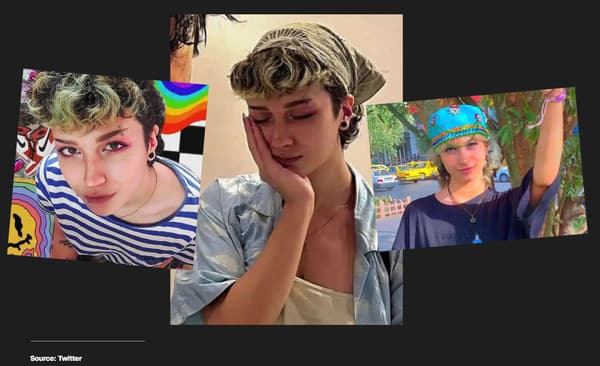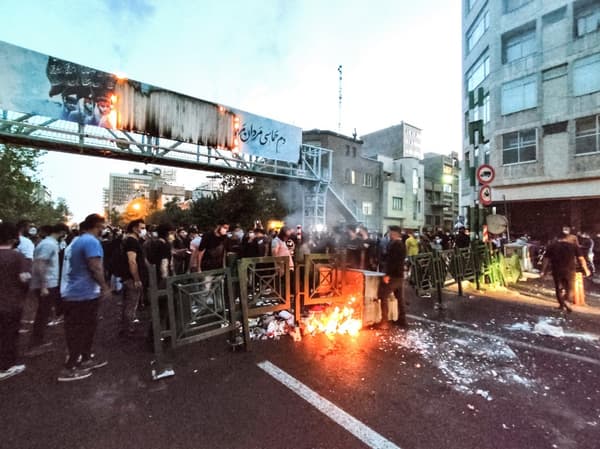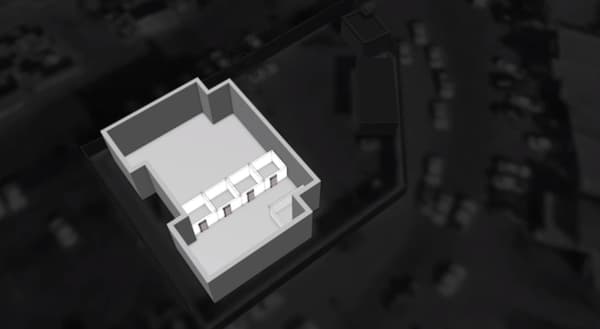Armita Abbasi is 20 years old. She looks like many young women of her generation: she has dyed platinum blonde hair, wears an eyebrow piercing, and posts videos of her cats on her social media. But as soon as the protests in Iran began, she began posting rampant criticism of the regime.
He disappeared from social media overnight. Having become a symbol of the movement, like Mahsa Amini or Nika Shakarami before her, she was later recognized by doctors at the hospital. She had her head shaved and she was surrounded by policemen.
“When he arrived, he was bleeding from his rectum… from the repeated rapes. The officers insisted that the doctor write it down as a violation before the arrest,” a member of the medical staff said, in comments reported by CNN.
A nurse also claimed that the police were preventing staff from speaking to Armita Abbasi and that it was written that she had been admitted to hospital with “digestive problems”. The young woman had been detained by the police, tortured and sexually assaulted.

many testimonials
In its document, CNN publishes several testimonies that reveal the sexual violence suffered by women, men and adolescents linked to the protest movement and, above all, show its systemic nature.
In recent weeks, videos have been circulating on social media showing Iranian security forces sexually assaulting female protesters in the streets. Reports of sexual violence against activists in prisons began to emerge.
In some of the cases, the sexual assault was filmed and used to blackmail protesters into silence.

Sexual assault and prison rape
Hana*, like many Iranian women, burned her headscarf in the street, a gesture that has become a ritual in recent protests. She was jailed and later fled Iran to Iraq, where CNN met her.
She was detained at a police station in the city of Urmia. “There were children of 13 and 14 years old who were captured during the protests. They were brutally injured. The girls were hurt even more. They were sexually raped,” she said.
“An officer took a pretty girl, and entered a room to be alone with her and sexually assaulted her,” adds the young woman.

It also recounts how a girl was locked in another interrogation room when her teenage brother demanded to join her to make sure “nothing happened to her”.
Hana explains that the police beat the boy with batons. Meanwhile, her sister was screaming in the interrogation room, she recalled, saying that she thought the woman was being raped.
Men and minors also affected
CNN also collected audio testimony from a 17-year-old who claims that he and his friends were raped and electrocuted in custody after being arrested during protests. For CNN, these testimonies suggest that the sexual assault on the minor is not an isolated act.
“Four men who had been beaten, who were screaming intensely, were taken to another cell. And one of the men who had been tortured was sent to the waiting room where I was,” the boy told CNN. .
“I asked him what all the screaming meant. He said the men were being raped.”
An officer then overheard this conversation and began to torture the young man. The latter says that he was later raped too.
Kurdistan human rights official Rebin Rahmani told CNN that two female detainees he spoke to were threatened with raping their teenage sisters to force them into televised confessions under duress. In one case, officers brought the woman’s teenage sister into an interrogation room and asked her if she was “ready” to let her sister be raped, Rebin Rahmani said, citing the protester’s account.
A labyrinthine prison system
The international groups Human Rights Watch and Amnesty International have also denounced several cases of sexual assaults in prisons since the protests began in mid-September in Iran.
They explain that protesters are often arrested and then transferred from one place to another, without their families knowing where they are being held. Hundreds of people have thus disappeared in this labyrinthine network of prisons and detention centers.
The Iranian government has barred unaccredited foreign journalists from entering the country, regularly shuts down the internet and silences dissenting voices with mass arrests. A climate of fear reigns in Iran as the repression intensifies. According to CNN, the stigmatization of victims of sexual violence adds another layer of silence to the situation.
Source: BFM TV

